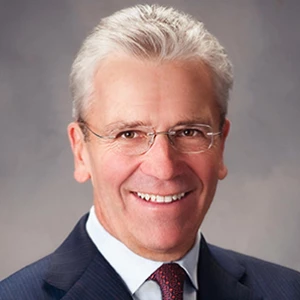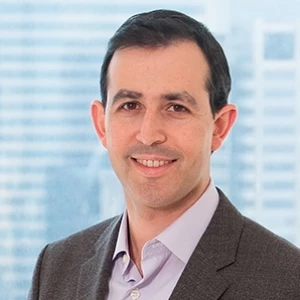This article is the second in a series based on Rocket: Eight Lessons to Secure Infinite Growth, which tells the stories of 16 business leaders who created iconic brands. The book, by Michael Silverstein, Dylan Bolden, Rune Jacobsen, and Rohan Sajdeh, is available now.
The conventional view is that consumers are fickle and inconsistent, hard to understand and predict, and therefore unmanageable. We disagree. We think they are perfectly consistent, perfectly understandable, and quite predictable.
The secret is to ask the right questions. Too often, companies do not understand this. They commission the wrong kind of research. They ask the wrong questions. They base their conclusions on syndicated data—historical purchases by category reported by Nielsen, IRI, NPD, Crest, and others.
They do this because they think, as most people do, that demographic factors—age, gender, income—hold the key to knowing what consumers want. These do play a part, of course. But in client work and extensive research for our book, Rocket: Eight Lessons to Secure Infinite Growth, we have established that the biggest determinant of customer choice is the occasion of use—that is, where the consumer is and with whom he or she is when using the product—and his or her emotional and functional needs at the time.
Consumers use products in different ways, depending on when they use them and whether they are on their own, with their friends, or with their family. So you need to ask: When do customers use the product? Whom are they with at the time? How do they want to feel? Which needs are current suppliers failing to fully fulfill?
Do this, and you will start to understand what really drives consumer choice. You will be able to aim your products at consumers such as these:
- Mary, the 15-year-old schoolgirl who comes home at 3 p.m. and wants something to eat that won’t be very caloric but will fill her up til dinner
- Joe, the 45-year-old office worker who looks at the clock as it strikes 3 p.m. and reaches into his desk drawer for a healthy fruit bar
- Eleanor, the 38-year-old stressed mother of two whose kids have just walked through the door and who wants a snack that the babysitter can give them as she leaves to go shopping
Across the country, 3 p.m. is a witching hour. Viewed properly, it is made up of many different eating occasions. If you understand all the elements of the occasion of use (activity, place, emotion), you can start to create products and services that match consumers’ hopes and dreams. You can deliver what’s really on their wish list.
Our approach focuses on consumer needs and wants. It focuses on emotional connection. If you ask the right questions, you can create a map of different kinds of demands. We call these demand spaces.
A demand space is the intersection of context (the consumer’s demographic profile, where he or she is, at what time, and with whom) and the consumer’s emotional and functional needs, and each unique space has a unique set of demands. These spaces are usually expressed in everyday language, the kind of language used by apostle customers—those who love and recommend a brand passionately and unequivocally—when they advocate brands to their friends and family.
In this article, we look at how Hilton Worldwide reconnected with customers in an emotional way and breathed new life into one of the world’s first great apostle brands.
Understand Your Customers’ Demands: Get to the Heart of What Really Drives Their Choices
When Chris Nassetta, a 30-year veteran of the lodging business, was picked to run Hilton Worldwide by Blackstone, the private-equity business that had acquired the company in a $26 billion leveraged buyout in 2007, he knew that he had a big, challenging job on his hands. The venerable lodging business—the world’s most recognizable hotel brand—was a shadow of its former self.
To get it back on track, Nassetta and his team looked at Hilton’s entire brand portfolio. There were nine different hotel brands, including the luxurious Waldorf Astoria and Conrad. Some were undisputed champions and category killers. But the full-service brands—not only Hilton but also DoubleTree—were underperforming. This was reflected in their quality and customer satisfaction scores, which were all trending downward—Hilton’s by 2 percent in the course of one year, DoubleTree’s by 3 percent.
Also, it was clear that these hotels were not sufficiently distinctive or different from one another. If anything, they were cannibalizing each other’s markets. As Jim Holthouser, global head of Hilton brands, explained, “In 2008, we were still struggling with how to think about DoubleTree relative to Hilton. It needed to be a standalone brand with its own swim lane, but we hadn’t defined it yet.”
So Hilton Worldwide turned to its team of dedicated data-driven brand and commercial-products executives. They were asked to experiment with new techniques that try to get to the heart of what really drives consumer choice by emphasizing emotional connection and eschewing conventional market research based on syndicated data and industrial segmentation, which group people broadly by age, income, and occasion, such as “leisure versus business” or “long stay versus short stay.”
The company conducted hundreds of interviews and surveyed thousands of consumers in the United States, Canada, the United Kingdom, Germany, China, Japan, Brazil, and Egypt. People were asked to describe what they wanted and—this was especially crucial—when and why they wanted it.
The results were startling. For the first time, Hilton had a map of what really mattered to consumers. It could separate the hospitality market into a rainbow of different categories—demand spaces—based on what consumers really, really wanted when they stepped over the threshold of a hotel.
In all, Hilton’s branding team identified 12 demand spaces. It then allocated each of its brands to one or more of them. As we’ll see, by bringing clarity to its brands’ positioning, the company was able to unlock growth and customer opportunities.
Resurrecting Hilton: Searching for a Distinctive and Differentiating Brand Position
To resurrect the flagship Hilton brand, Nassetta and his team knew that it had to reconnect with customers in an emotional way. Hilton had to recapture its zest. It had to rediscover the essence of its success when it was the place to stay for royalty, rock stars, and the cream of high society.
Initially, it was thought that Hilton should be made “cool and hip” again, as it had been in its heyday. In one sense, this was perfectly logical. If Hilton was to recapture its earlier success, why not go back to this great heritage?
But the research pointed in a different direction. Customers were asked about their real choices, their real needs and demands. What are the must-haves of your experience? How do hotels in general, and Hilton in particular, make you feel today? How would you like a hotel to make you feel tomorrow?
The analysis showed, in a very data-driven way, that the emotional space of cool-and-hip was small. It accounted for just 2 percent of the market. This was far too small for a global brand such as Hilton, which has more than 550 properties and is fast approaching its centenary.
It also revealed an emotional space that Hilton should target—namely, the “recharge and refresh” space. This was perfect for the brand because it embraces both leisure and business travelers.
From the detailed consumer feedback, Hilton established that the recharge-and-refresh space was large and growing, accounting for 25 percent of the market. Also, the team established that the company had a right to win in this space. But it did not have a fair share of the market.
Armed with this information, Hilton set about repositioning its flagship brand. As a start, it brought back the founder’s motto for the overall company, “To fill the earth with the light and warmth of hospitality.” This became the “vision” in a carefully crafted “brand architecture.” The centerpiece of this work was the development of a brand personality for Hilton, which included five traits—the things that customers say they see when they check into a Hilton. These personality traits were: authentic, worldly, generous, refreshing, and competent. The brand personality also included a set of values: hospitality, integrity, leadership, teamwork, ownership, and—significantly—“now.” Hilton had once defined an era, but that era was long gone. Now it wanted to reflect a new age.
After defining Hilton’s personality and values, the branding team developed some functional and technical features. It introduced what the team members referred to as sacred cows. These are features unique to the Hilton flagship brand. One is high-quality food and beverages available 24/7. Another is a connectivity station, located in the lobby, allowing complimentary high-speed Internet access in order to conduct meetings or simply print boarding passes.
Then Hilton unveiled some “unique delighters.” Customers were provided with an executive lounge, a bar in the lobby, and updated rooms that were spotlessly clean and featured large, white, comfortable beds and new flat-screen TVs. Also, they were offered “fair pricing.” Until then, Hilton had often been accused of nickel-and-diming its customers. Now it needed to be seen as “generous.” In this spirit, it made strenuous efforts to answer complaints and resolve problems as quickly and painlessly as possible.
Securing Transformational Growth: The Big Questions
The strategy of focusing on the needs or demands of the customer has delivered strong results for Hilton Worldwide. The real sign of the success of the brand strategy was the company’s return to the public markets. In 2013, Blackstone sold $2.7 billion of stock, valuing the company at $33 billion. This was a 27 percent premium over the purchase price in 2007. It was the world’s largest IPO for a hotel operator.
Hilton Worldwide’s success so far is testimony to the power of a strategy that puts customer choice at the heart of the business. The demand-centric research puts into management’s hands the answers to five key questions:
- What fundamentally drives choice in different consumer categories? And, more important, what does not?
- What are the consumer needs that are shaping market demand, and what is the relative size of these needs?
- What categories and products do consumers use? When, where, with whom, and how do they use them?
- What is the company’s right to win, and for which needs? Where is it vulnerable to competitive attack? Where is the white space or unfilled universe of demand for the company?
- What needs are competitors satisfying, and how? Where are they sourcing share today, and why?
The answers to these questions can drive growth for any business that sells to consumers. The answers to these questions can be known for any business that sells to consumers. The only uncertainty is whether you or your competitor will answer them first.
There is a simple test. The following symptoms, which we have seen in companies across numerous industries, are an indicator that demand spaces can unlock growth in your business:
- Growth is below aspiration and share is in decline (ceded, especially, to small, more focused upstarts).
- Despite many, many “insight” PowerPoint presentations, the leadership team cannot simply and concisely describe how and why consumers make their choices.
- Your multiple brands are all attacking the same target, resulting in high cannibalization.
- There is either no segmentation or, worse, multiple overlapping segmentations (such as by gender, age, or ethnicity).
- Different functions operate under different strategies, and there is internal friction between marketing and sales.
If your business is suffering from these symptoms, demand spaces can provide the insights, clarity, and direction needed for growth. 2016 is coming at us fast. It’s time to get ready, get smart, and get focused. Know whom you want to serve and why. And know how you can make these consumers yours alone.








